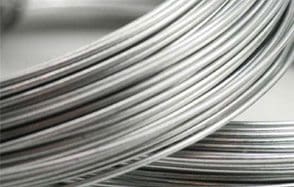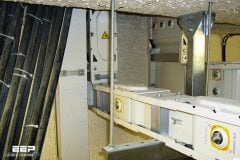 High-resistance oxides form very quickly on aluminum and copper conductors expose to air. Once the oxides are stabilized, they prevent further oxidation of the parent metal; however, due to this high electrical resistance, these oxides must be broken or removed before making up connections.
High-resistance oxides form very quickly on aluminum and copper conductors expose to air. Once the oxides are stabilized, they prevent further oxidation of the parent metal; however, due to this high electrical resistance, these oxides must be broken or removed before making up connections.
Oxidation-inhibiting joint compounds are used to prevent reoxidation of the metals in the connections.
Copper oxide
Copper oxide is generally broken down by reasonably low values of contact pressure. Unless the copper is very badly oxidized, good contact can be obtained with minimum cleaning.
Silver oxide
Silver oxide is easily broken down by contact pressure and forms less readily at elevated temperature. Thus it is good practice to silverplate copper contact surfaces that must be operated at elevated temperatures.
Aluminum oxide
Aluminum oxide is a hard, high-resistance film that forms immediately on the surface of aluminum exposed to air. This tough film gives aluminum its good corrosion resistance. After a few hours, the oxide film formed is too thick to permit a low-resistance contact with cleaning. The film is so transparent that the bright and clean appearance of an aluminum conductor is no assurance of a good contact.
After cleaning the oxide film from aluminum, a compound must immediately be applied to prevent the oxide from reforming.










